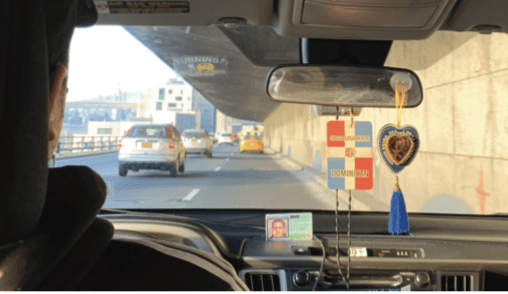Brooklyn Heights Group Wants to Break the Car Culture, Nix Lanes on Rebuilt BQE


The powerful Brooklyn Heights Association, which has been defending the neighborhood’s pre-car character since even before Robert Moses, is now demanding that the city break its car culture by prioritizing green space and pedestrian improvements over automobiles when it rebuilds the crumbling Brooklyn-Queens Expressway — most significantly by reducing the amount of space available to private vehicles.
The civic group’s official comments are among its first publicly since Mayor de Blasio created his own “expert” panel to come up with a new design for the repair of the aging highway, which carries 135,000 cars and 15,000 trucks a day — months after his administration came under fire for two much-reviled and equally expensive proposals that would have just rebuilt the six-lane highway as is (and possibly destroy the fabled Promenade at the same time).
Now, the BHA — joined by a dozen other neighborhood groups — are asking the 16-person panel to not merely propose simply rebuilding the highway, but alter its very nature so that it reduces the negative impacts cars have long had on the neighborhoods alongside it.
Specifically, the BHA and Cobble Hill Association are asking the panel to recommend a two-lane reduction on the highway — a dramatic difference from the BHA’s original design endorsement, when its hand-picked architect Marc Wouters kept all six lanes in his alternative to the DOT’s proposal. Wouters later revised his design to reduce the number of lanes on the highway.
In rejecting Wouters’s initial proposal, the BHA is now encouraging the panel to consider concepts that discourage driving.
“We’re [now] espousing … reducing the lanes of traffic from six to four,” said Executive Director Lara Birnback, adding that the group believes fewer lanes will create a reverse version of induced demand — the concept that the more lanes that get built, the more drivers will fill them.
“We’ve seen the concept of induced demand in a lot of other cities and we’re hoping the planners take [a reduction in lanes] seriously here,” she said.
The full coalition hasn’t taken a poll on how many or which of the 13 groups besides the BHA and CHA support reducing the highway by two lanes, but said in a letter to de Blasio’s panel that its priority does include putting the brakes on car culture.
Other demands from the coalition — which includes the Boerum Hill Association, DUMBO Neighborhood Alliance, and Willowtown Association — include enhancing public transportation; creating alternative routes during construction that don’t take drivers through local streets; building and improving direct pedestrian pathways to neighboring Brooklyn Bridge Park; and reconnecting the communities split in half by Moses’s highway, especially local green spaces.
“This is an opportunity to improve and correct the planning ideologies of the past that prioritized automobiles – dividing and destroying many of the city’s historic neighborhoods,” the groups wrote in a Nov. 25 letter to the panel. “We must not just rebuild and maintain the status quo, but reimagine the future of our city, with a greater emphasis on public space and healthy, walkable communities.”

The coalition’s shared vision for a future BQE comes after nearly everyone chastised the mayor for two versions of the same plan: one calling for the city to tear down the historic Brooklyn Heights Promenade to make room for a temporary six-lane highway until the new roadway could be completed in six years; the other rebuilding the expressway lane by lane. Both plans would have cost $3 billion.
The coalition’s so-called unified vision for the future of the BQE follows at least four other proposals put forward by city pols including Comptroller Scott Stringer, who wants to ban cars so that the expressway can be set aside for trucks only, and then covered with parks. Another plan, from renowned architecture firm Bjarke Ingels Group, calls for a six-lane roadway decked over with a linear park. And one from the Regional Plan Association also proposed cutting two lanes of traffic.
Cobble Hill Association President Amy Breedlove says that neither her group — nor the larger coalition — is currently endorsing one specific plan, but is supportive of recommendations like Stringer’s and RPA’s for a truck-only or bus-only expressway, and one with fewer lanes.
The panel, which was supposed to announce its recommendation this summer, is now expected to release its report by the end of the year.





